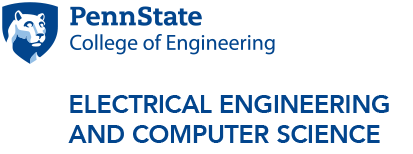EE Colloquium: The Fourth Generation Optics: The Concept, Materials, Technology, and Applications
Abstract: The Seminar provides an intuitive introduction into the underlying principles of the new generation of optical components and systems, requiring only basic knowledge (or just an interest) in optics. The course will make it evident for attendees that:
- a micrometer-thin film may perform as a high power lens, prism, spiral phase plate, beam shaper, etc., and in a broadband of wavelengths comparable to that of glass and other transparent optical materials;
- optical functions can be switched on and off with low voltage controls;
- thin film optical components can be combined to provide versatile beam control functions such as all-electronic beam steering, switching between multiple focal points, spectral tuning, variable transmission, etc.
- an ultralight and ultrathin film may be used as primary optics for a very large telescope, both for deep space communication as well as imaging.
The first generation of optics relied on shaping an optically transparent material such as glass. Modulating refractive index instead of shape – the second generation of optics – allows thinner components but compromises bandwidth. Anisotropic materials make available two more parameters for controlling light beams. LCD industry is exploring one of them, modulation of effective birefringence - the third generation of optics. A recent breakthrough, the fourth generation of optics, relates to patterning optical axis orientation in the plane of anisotropic films. Obtained as thin film coatings on any desired substrate, including plastic, flat or curved, all different varieties of optical functions can now be obtained using the same materials and processes. 4G lenses, prisms, vortex waveplates, etc., are thin films of continuous structure allowing low-cost manufacturing just by inducing desired orientation patterns by a touch of polarization modulated light.
Unlike metamaterials, 4G optics technology is at a high level of maturity and is being studied and adapted for modern applications including LiDARs for auto-navigation, augmented reality displays, adaptive ophthalmic lenses, space telescopes, and even solar sails.
[1] N. Tabiryan, D. Roberts, D. Steeves, and B. Kimball, “4G Optics: New Technology Extends Limits to the Extremes,” Photonics Spectra, March, 2017, pp. 46-50.
Biography: Dr. Nelson Tabiryan pioneered development of the Fourth Generation Optics technology - Diffractive Waveplates - marking a major breakthrough in planar optics. He is the CEO of Beam Engineering for Advanced Measurements Corporation that demonstrated the first thinnest and largest planar lenses, prisms, and other spectrally and angularly broadband optics and photonics devices. He received a Ph.D. degree in Physics and Mathematics from the Institute of Physical Investigations of the Armenian Academy of Sciences, Yerevan (1982), and D. Sc. Degree from the Highest Certifying Commission of the USSR (1986). Dr. Tabiryan is OSA Fellow, NIAC (NASA) Fellow, Alexander Von Humboldt Research Scholar, recipient of the Frederiks Medal, and the American Chemical Society’s Cooperative Research Award (2013). He is the chairman of the International Meeting on Photoalignment and Soft Matter (PhoSM-2020) and other international meeting. Dr. Tabiryan is the program committee member, keynote, plenary and invited speaker in numerous conferences, and principal investigator of many advanced research programs being conducted for the Governmental and commercial organizations. He has over 250 refereed publications and 50 issued patents.
Event Contact: I.C. Khoo



